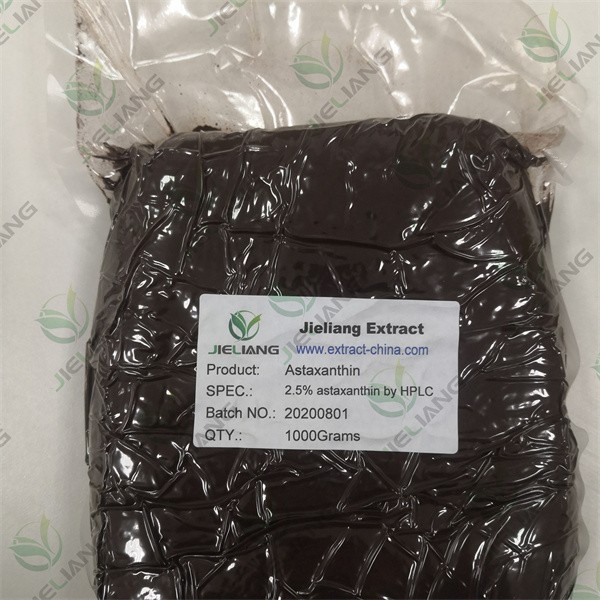Astaxanthin is classified as a xanthophyll
Astaxanthin is a keto-carotenoid. It belongs to a larger class of chemical compounds known as terpenes (as a tetraterpenoid) .
Astaxanthin is a blood-red pigment and is produced naturally in the freshwater microalgae Haematococcus pluvialis and the yeast fungus Xanthophyllomyces dendrorhous (also known as Phaffia).
Astaxanthin water-soluable powder is obtained by emulsification of haematococcus pluvialis extract with water-soluble gum acacia and other constituents; the main component is astaxanthin from haematococcus pluvialis; compared with astaxanthin oil, astaxanthin water-soluble powder is made from water-insoluble astaxanthin oil which is processed for water dissolution and spray dried using emulsification technique; it is orange to red and its water solution is orange red.
Natural astaxanthin oil is extracted from haematococcus pluvialis through cell disruption with edible alcohol under high temperature and high pressure.
Application
1) The Astaxanthin broken wall
powder is absorbed more easily. It can be used for food additives, health products, dietary supplements, feed (aquaculture, poultry, etc.).
2) Astaxanthin Water soluble Powder can be added in less transparent beverages similar to orange juice. Astaxanthin can be added in neutral or acidic beverages due to the good stability of its emulsion molecule and is more easily absorbed by human bodies.
3) Astaxanthin Oleoresin (Astaxanthin Oil) can be applied as a food additive (nonalcoholic beverage, jelly, dairy products, pastries, etc.), and can be added in common food and cosmetics.
COA and Chromatogram For Reference










